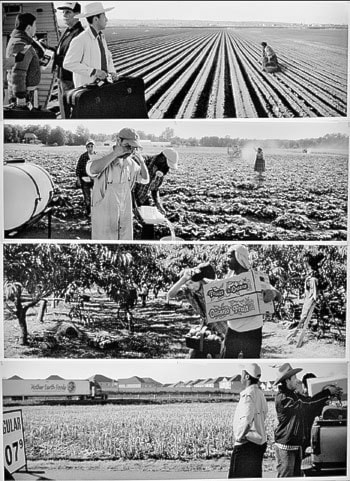With much pomp and circumstance, Great North Development Group announced its support for a new gallery show at the Yukon Arts Centre.
Great North CEO Robert Flatt was on hand Nov. 15 to present a $40,000 cheque to the arts centre as part of the company’s commitment to supporting arts in the Yukon.
The company is also sponsoring the Scenic City photography exhibit by former Dawson City artist Mike Yuhasz, which was unveiled at the opening.
Great North set up a display booth showcasing all the amazing things the company does, “working today for our tomorrow,”
as its slogan goes. There was much gripping of hands and grinning of smiles. There were even call girls.
“I was very thrilled to have Great North Development Group sponsor the series,” said Yuhasz.
Too bad Great North doesn’t actually exist.
It’s a fake company that Yuhasz started a few years ago as part of an art project that questions society’s relationship with the corporate world. He even has fake business cards, and would talk his way into trade shows.
The whole cheque presentation in Whitehorse was a hoax, an elaborate performance art piece that is actually part of Yuhasz’ message: we need to question the facades that we’re constantly presented with.
“Everything has a spin on it. In the Yukon, it’s this idea of the magic and the mystery. In Owen Sound (where Yuhasz has lived since 2008) they call themselves ‘the Scenic City.’ It was a big port town on the Great Lakes, but when I moved there I was struck by the decay and decline of the manufacturing economy,” said Yuhasz.
Yuhasz was intrigued by the contrast between Owen Sound’s bucolic self-image and the decrepit “brown zones” of old factories and the harbour left to rot. So he started photographing those zones and the Scenic City project was born. The work is a collection of simple photographs of empty construction sites, run-down warehouses and abandoned playground equipment - the sorts of things that city marketers wouldn’t necessarily draw attention to.
“You have to sort of dig through the fog of reality, what is presented to us, to get to the truth. That’s sort of been a running theme in my work: reality, utopia and dystopic visions,” Yuhasz said.
“Even in the Yukon, we talk about the unspoiled wilderness, but that’s not entirely true. A lot of my work juxtaposes land and human activity.”
Scenic City is a dispassionate, almost depressing look at the leftovers of a bygone era. The staged cheque signing, however, was anything but. Yuhasz is known in the Yukon as a bit of a joker, even donning a wig and stiletto heels to play the part of the fake CEO’s call girl.
“I was his companion for the evening. I’m 6’6” even without heels, and there’s a photo of the art gallery staff and our CEO standing there holding the cheque with me towering over them in the background in full drag,” Yuhasz said.
“The whole idea was a sort of intervention of sorts that was a satirization of corporate culture dealing with the North,” said Earl Miller, the show’s curator.
Miller said he was impressed with Yuhasz’s sense of humour and ability to poke fun at just about anything.
Miller also curated the arts centre’s other new show, a series of photo-collages by Toronto-based photographers Carole Conde and Karl Beveridge. Where Yuhasz’s exhibit has an undercurrent of levity and humour, Conde and Beveridge’s work is a more sombre reflection on society’s ills.
Their show is based around the four elements, with photo collages representing earth, fire, water and air, as well as a number of other themes.
To build them, the two artists - who have been working together since the ‘70s - photograph all the different pieces for each collage separately, and combine them digitally to give a super-imposed, almost billboard quality to each work.
That isn’t an accident. Conde said they choose to work with clip-art style images because they resemble the advertising that people are bombarded with each day.
“People are very aware of adds in subways and billboards. Their readability was much more accessible,” said Conde.
For a piece titled The Plague, Conde and Beveridge combined images of business-suited capitalists like Milton Friedman and travellers crowded together in a chaotic airport and beset by a swarm of frogs.
The piece is a commentary on the international financial crisis, and the fact that it’s as much ecological as it is economic, said Conde.
“We wanted an international space,” Beveridge explained. “We decided to use frogs instead of locusts because they’re an indicator species.”
Other collages in the show include a series of photos depicting the life of migrant farm workers in Canada. The models for all of Conde and Beveridge’s work are actors shot in a studio. That was especially important for the migrant worker series, said Conde, because using real workers could have put them at risk of deportation.
Both exhibitions run until Jan. 25 at the Yukon Arts Centre gallery. Admission is by donation.
Contact Jesse Winter at
jessew@yukon-news.com
